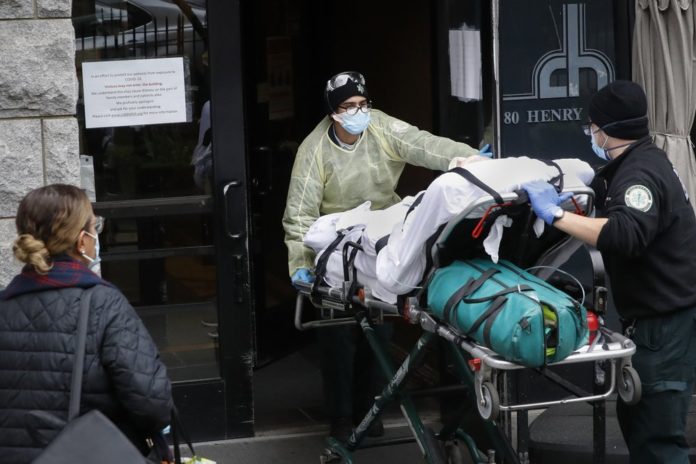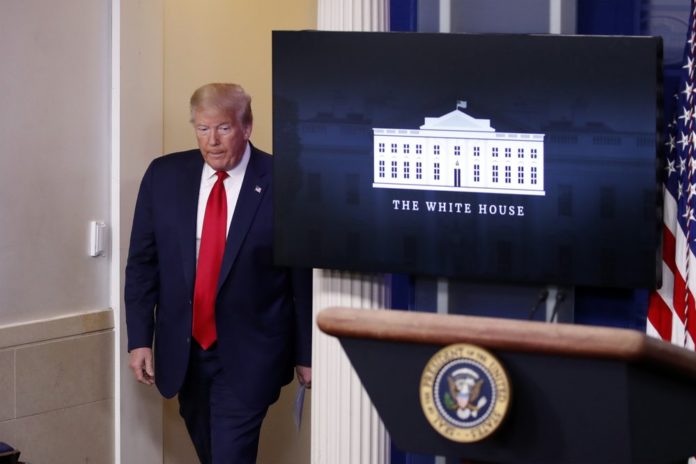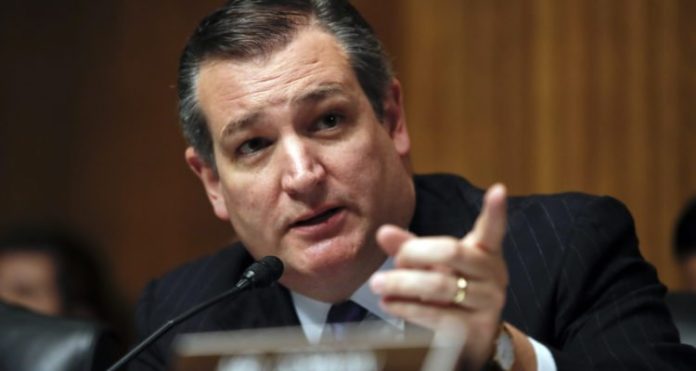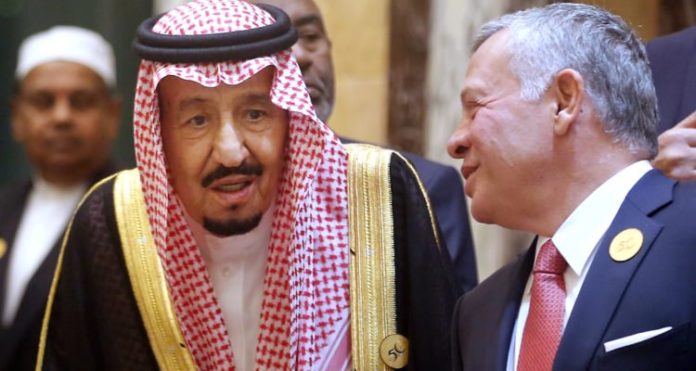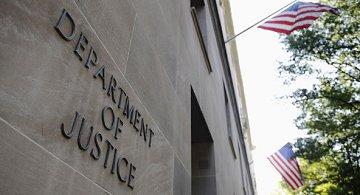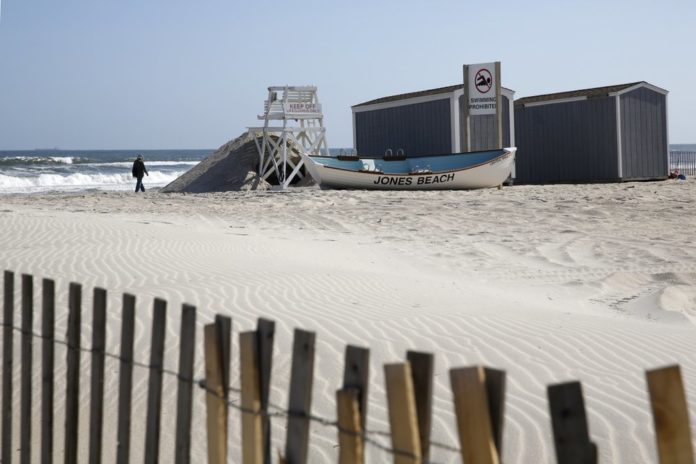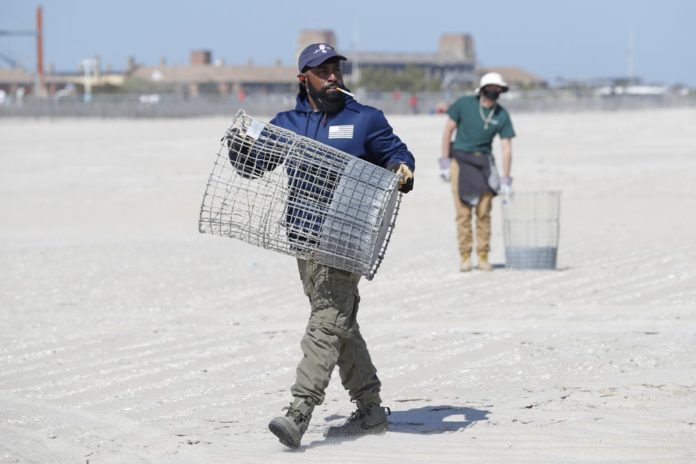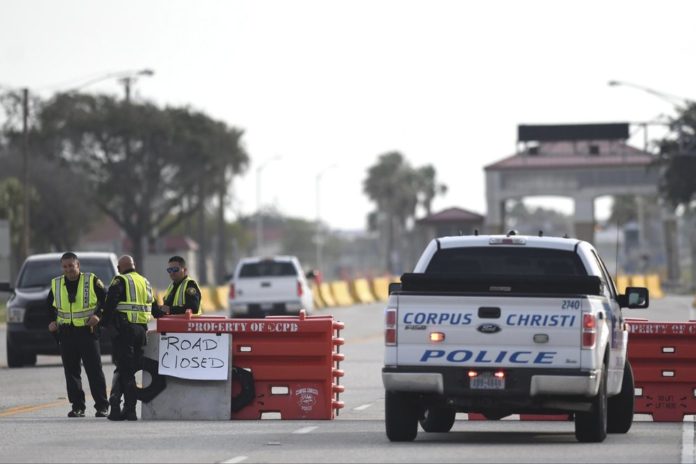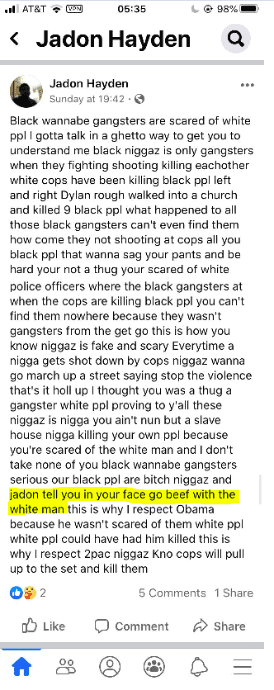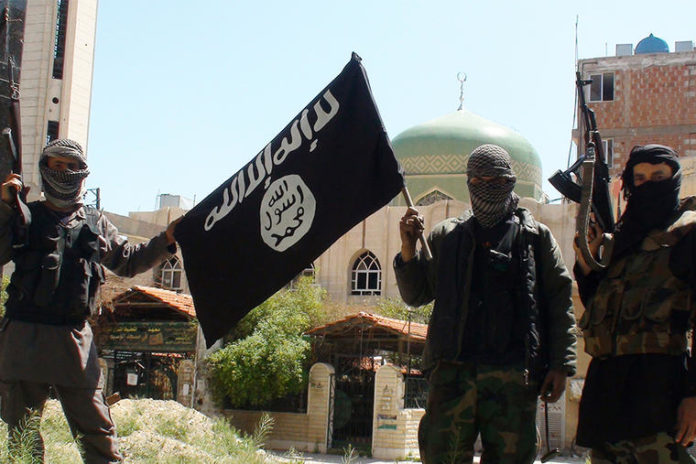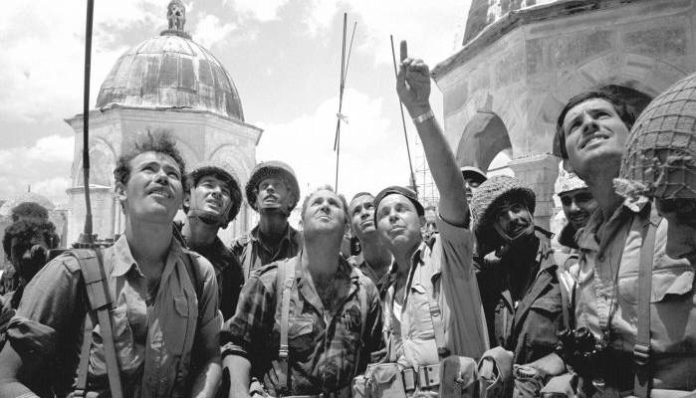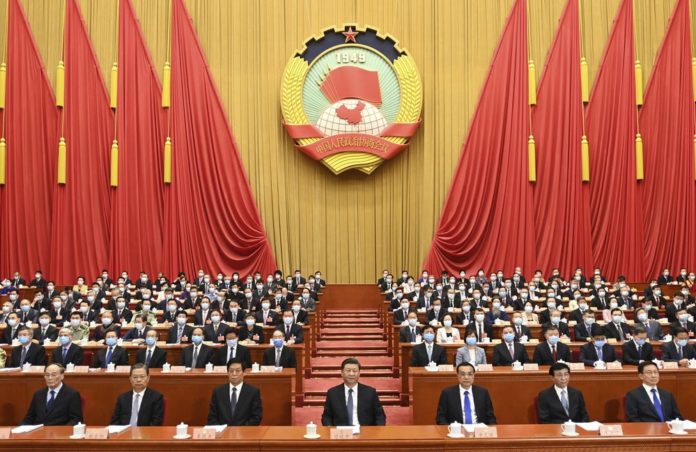pril 24 — Ghor, Afghanistan — Taliban kills one civilian in the village of Teghah-e-Timor in Firoz Koh.
April 24 — Diyala, Iraq — Islamic State (ISIS/ISIL) kills at least two members of the pro-government Sunni militia forces Al-Hashd Al- Shayari.
April 24 — Borno, Nigeria — Suspected Boko Haram jihadists kill five, including three policemen, and wound “several others” in the state capital of Maiduguri.
April 24 — Faryab/Ghazni, Afghanistan — Taliban kills three civilians in northern Faryab province, one other in eastern Ghazni, wounds a total of 25 others, including women and children.
April 24 — Deir Ezzor, Syria — ISIS kills official in charge of fuel and his nephew in Kurdish-controlled northeastern Syria.
April 25 — Badghis, Afghanistan — Taliban mortar kills a woman, wounds a child in the village of Kamengi Oliya in Qadis District.
April 25 — Jowzjan, Afghanistan — Taliban kills two pro-government militia members and wounds four others in the Hyderabad village of Faizabad District.
April 25 — Faryab, Afghanistan — Taliban kills a 70-year-old man in the village of Sufi Qala located in the Qaisar district.
April 25 — Faryab, Afghanistan — Taliban improvised explosive device, or IED, kills a child and injures an adult civilian in Almar district.
April 25 — Faryab, Afghanistan — Taliban kills one and wounds ten civilians, including women and children, in Kohi village of Qaisar district.
April 25 — Uruzgan, Afghanistan — Taliban kills four policemen and wounds three others.
April 25 — Dhalea, Yemen — Iran-backed Houthi rebels kill five pro-government forces, wound 11 others in the al-Husha district.
April 25 — Logar, Afghanistan — Taliban kills 7 members of the Afghan National Defense Security Forces (ANDSF), and kidnaps four others in Barak-e-Barak district. The ANDSF includes police and army units.
April 26 — Parwan, Afghanistan — Taliban kills police officer in the Matak area of Charikar District.
April 26 — Herat, Afghanistan — Taliban kills two police officers, wounds another in the village of Qasr-e-Naser in Pashtun-Zarghun District.
April 26 — Faryab, Afghanistan — Taliban kills one soldier and is linked to killing one civilian and wounding three others in Shirin Tagab district.
April 26 — Logar, Afghanistan — Taliban kills five police officers and takes four other prisoners in Baraki Barak district.
April 26 — Uruzgan, Afghanistan — Taliban kills three police officers, wounds two in the Nachin area of Tarin Kot.
April 26 — Mogadishu, Somalia — Al-Qaeda-affiliate al-Shabaab kills four and wounds three in the Halane base that houses American and European troops.
April 26 — Takhar, Afghanistan — Taliban kills seven, wounds three government-backed militiamen in Khwaja Bahauddin district.
April 26 — North Kivu, Democratic Republic of Congo (DRC) — Fighters from the ISIS-linked Armed Democratic Force (ADF) kill six, including one woman, in the town of Malambo.
April 26 — Al Anbar, Iraq — ISIS kills Walid district councilman, kidnaps his son, wounds two other family members.
April 26 — Mogadishu, Somalia — Al-Shabaab assassinates a businessman.
April 27 — Diyala, Iraq — ISIS wound two policemen.
April 27 — Jowzjan, Afghanistan — Taliban kills two soldiers, wounds three in Mingajik District.
April 27 — Takhar, Afghanistan — Taliban Red Unit kills four pro-government militia members, wounds two others in Laala Gozar village of Yangi Qala District.
April 27 — Badghis, Afghanistan — Taliban marksman kills two police officers and wounds another as they were bringing water from a well in the village of Mirza-Ali in Qadis District.
April 27 — Kunduz, Afghanistan — Taliban kills two soldiers, wounds another in Seh Chinara area of Chardara District.
April 27 — Kunduz, Afghanistan — Taliban kills one police officer, wounds another in the Aqi Bai village of Imam Sahib District.
April 27 — Herat, Afghanistan — Taliban jihadis on motorcycle kill one member of the primary intelligence agency in Afghanistan, the National Security Directorate (NDS) in Golran District.
April 27 — Paktia, Afghanistan — Taliban kills four police officers in Gardez City.
April 27 — Faryab, Afghanistan — Taliban abducts and kills three civilians in Maimana City.
April 27 — Colombes, France — ISIS-linked man rammed his car into two police motorcyclists, seriously injuring them.
April 27 — Ghor, Afghanistan — Unknown terrorist group places Improvised Explosive Device (IED) that kills on ANDSF member in the village of Maidanak, in the Barrah-Khanah area of the provincial capital Firoz Koh. The area has no significant non-jihadist terrorist presence.
April 28 — Herat, Afghanistan — Taliban kills one soldier, wounds another in the village of Noorzayeha in Koshk-e-Kohneh District.
April 28 — Kirkuk, Iraq — ISIS suicide attack wounds three security forces.
April 29 — Central District, Israel — Palestinian teen stabs 62-year-old Israeli woman in the town of Kfar Saba in what authorities described as a terror attack.
April 29 — South Cotabato, Philippines — Jihadis from the ISIS-linked Ansar Al-Khilafah kill two police officers in an outskirt village in Polomolok.
April 29 — Kabul, Afghanistan —Taliban kills three civilians and wounds 15 others in the Reshkhor area of Char Asyab district.
April 29 — Kunduz, Afghanistan — Taliban kills three soldiers, wounds another, and kidnaps an additional soldier in the Zakhil-e-Qadim area of Kunduz city.
April 29 — Logar, Afghanistan — Taliban kills two soldiers, wounds another in Kharwar District.
April 29 — Badghis, Afghanistan — Taliban kills one pro-government militiaman, wounds another in the village of Kharistan in Moqor District.
April 29 — Faryab, Afghanistan — Taliban kills two police officers in the Hadbakhshi area of Khan Charbagh District.
April 29 — Faryab, Afghanistan — Taliban kills one soldier, one civilian woman, wounds 15 civilians, one soldier in Shirin Tagab district.
April 29 — Herat, Afghanistan — Taliban kills two soldiers in the village of Khawja-Jir in Koshk-e-Robatsangi District.
April 29 — Herat, Afghanistan — Taliban kills two soldiers in the village of Chah-Rig in Ghoryan District.
April 29 — Samangan, Afghanistan — Taliban kills nine pro-government militiamen and wounds nine others.
April 29 — Kunduz, Afghanistan — Taliban kills four police officers and wounds three others in the Aqi Bai and Naw Abad villages of Imam Sahib District.
April 29 — Badakhshan, Afghanistan — Taliban kills three police officers, one pro-government militiaman, two members of territorial army, and wounds eight others.
April 30 — Ghazni, Afghanistan — Taliban roadside bomb kills two men, two women, one child in the Nazar Khan area of Andar District.
April 30 — Kunduz, Afghanistan — Taliban Red Unit kills three police officers, wounds seven on the highway connecting Khan Abad District to Kunduz City.
April 30 — Takhar, Afghanistan — Taliban Red Unit kills five pro-government militiamen, wounds five others in the Laala Gozar village of Yangi Qala District.
April 30 — Sinai, Egypt — An ISIS improvised explosive device (IED) kills up to ten soldiers near the southern city of Bir al-Abd.
April 30 — Diyala, Iraq — ISIS snipers wound two policemen.
April 30 — Dhaka, Bangladesh — Terror-linked Islamist Jamaat-e-Islami affiliated with killing a child and wounding 11.
April 30 — Helmand, Afghanistan — Taliban IED kills the head of the intelligence office of Nawa district and his bodyguard.
April 30 — Deir Ezzor, Syria — ISIS IED strikes a bus carrying Syrian soldiers, killing six of them.
April 30 — Aleppo, Syria — Al-Qaeda-linked Hayyat Tahrir Al-Sham (HTS) kills a civilian, injures five others.
April 30 — Idlib, Syria — HTS kills a Kurdish civilian.
April 30 — Aleppo, Syria — Turkish-backed Islamists from Ahrar Al-Sharqiyyah brutally injure a man with special needs in a market in rural Afrin, for “eating in public” and not “observing Ramadan.”
April 30 — Pattani, Thailand — Islamists from the Barisan Revolusi Nasional (BRN) injure a police officer in a shootout.
April 30 — Deir Ezzor, Syria — ISIS injures three Kurdish-led SDF soldiers near the gas plant in Jadidat Akidat town.
May 1 — Aleppo, Syria — Turkish-backed Ahrar Al-Sharqiyyah jihadis kill a Turkish-backed military police officer, injure three others in the city of Jarabulus.
May 1 — Logar, Afghanistan — Taliban kills three soldiers, wounds two others in Baraki Barak district.
May 1 — Balkh, Afghanistan — Taliban attacks police headquarters and district governor’s office in Zari District, killing one civilian, nine soldiers, five pro-Kabul militia members, wounds 20 other ANDSF members.
May 1 — Deir Ezzor, Syria — ISIS injures five members of the Kurdish-led Syrian Democratic Forces (SDF) in Daman village.
May 1 — Deir Ezzor, Syria — IED goes off in an area with heavy ISIS presence, killing two children and injuring three others.
May 2 — Laghman, Afghanistan — Suspected Taliban narco-jihadis detonate motorcycle laden with explosives in from the of the prison in the provincial capital of Mataram, killing three civilians and wounding four security forces, including prison head.
May 2 — Paktia, Afghanistan — Taliban kills two pro-Kabul militiamen, wound three others in Anzargi Kandaw area of Patan District.
May 2 — Kandahar, Afghanistan — Unknown terrorists detonate a bomb while police officers were shopping in the provincial capital of Kandahar City, killing one and wounding another. Kandahar is the birthplace of the Taliban and a jihadi hotbed.
May 2 — Raqqa, Syria — Turkish-backed Islamists from Ahrar Al-Sharqiyyah brutally injure a civilian in the Turaybikh village of Ain Issa for “smoking cigarettes during the daytime of Ramadan.”
May 2 — Salahaddin, Iraq — ISIS kills at least 10 members, setting some of them ablaze, wounds four others of the Iran-linked Popular Mobilization Forces (PMF) who helped decimate the Sunni terrorist group’s so-called caliphate.
May 2 — Diyala, Iraq — ISIS kills four police officers, wounds 1o others in at the Zaghniya station.
May 2 — Pulwama, Indian Kashmir — Unknown terrorists throw grenade at security forces, injuring one. Terrorism in the area directed against Indian forces is almost exclusively jihadist in nature.
May 2 — Kupwara, Indian Kashmir — Pakistan-linked terrorist group Lashkar-e Tayyiba (LeT) affiliated with a terrorist attack that kills five Indian forces in the town of Handwara.
May 2 — Narathiwat, Thailand — Suspected BRN Islamists kill two civilians.
May 2 — Benue, Nigeria — Fulani herdsmen kill two people, wound two others in the village of Imande on Makurdi-Naka road.
May 3 — Diffa, Niger — ISIS-West Africa kills at least one, wounds others.
May 3 — Pattani, Thailand — Suspected Islamist BRN militants kill two soldiers.
May 3 — Kupwara, Indian Kashmir — LeT suspected in a blast that injures eight civilians, including children in the town of Handwara.
May 3 — Herat, Afghanistan — Unknown terrorists kill two members of top intel agency NDS near the governor’s office in Ghoryan District. The area has no significant known non-jihadist terrorist activity.
May 3 — Diyala, Iraq — ISIS kills seven PMF members, injures five.
May 3 — Diyala, Iraq — ISIS kills three, wounds four other members of the Iraqi military, tribal fighters.
May 3 — Plateau, Nigeria — Fulani terrorists kill four Christians in the Miango area.
May 4 — Helmand, Afghanistan — Taliban terrorists target military base in the Yakhchal area of Grishk district with an explosives-laden vehicle, killing 10 pro-Kabul militia members, one soldier, and wounding 10 other militiamen, three soldiers.
May 4 — Idlib, Syria — HTS launches grenade, then opens fire on civilians in Idlib city’s Al-Jamia’a neighborhood, killing two and injuring others.
May 4 — Idlib, Syria — Indiscriminate gunshot leaves baby girl killing in a refugee camp on the outskirts of Kelli town, home to clashes between HTS and Syrian rebels.
May 4 — Diyala, Iraq — ISIS kills one soldier, wounds four others in the town of Bahriz.
May 4 — Laghman, Afghanistan — Taliban kills one civilian in Alisheng district.
May 5 — Helmand, Afghanistan — Taliban jihadis kill two police officers with IED, kill another after the explosion.
May 5 — Abyan, Yemen — Suspected al-Qaeda in the Arabian Peninsula (AQAP) jihadis kill a civilian and soldier.
May 5 — Diyala, Iraq — ISIS injures at least one soldier in Bohrouz subdistrict of Daquq, injures four.
May 5 — Kirkuk, Iraq — ISIS kills two Iraqi forces in Birmahdi village near Hawija.
May 5 — Plateau, Nigeria — Fulani terrorist attack Christian school in the village of Gana Ropp, injuring headmaster, who survived shot in the head, and three of his family members.
May 6 — Helmand, Afghanistan — Taliban jihadist kill a police officer who was shopping in Lashkar Gah, the provincial capital.
May 6 — Benue, Nigeria — Fulani terrorists kill man, his pregnant wife in Tarkende village.
May 7 — Khost, Afghanistan — Taliban terrorist kill a provincial police chief, his bodyguard, and secretary, wounds another, in the Khwaja Raheem area of Nadersha Kot District.
May 7 — Deir Ezzor, Syria — ISIS jihadis kill at least 11 Syrian regime forces and militia loyalists and injure many others.
May 7 — Deir Ezzor, Syria — ISIS kills two members of the Kurdish-led Syrian Democratic Forces (SDF) in the town of n Al-Baghouz in the Al-Bokamal countryside.
May 7 — Deir Ezzor, Syria — IED placed by an unknown terrorist group in an area with prominent ISIS presence kills two members of the pro-Kurd, pro-Syrian regime National Defense Forces (NDF) militia.
May 7 — Lower Shabelle, Somalia — Al-Shabaab kills man in the town of Afgoye.
May 7 — Diyala, Iraq — Suspected ISIS sniper kills police officer in Khan Bani Saad.
May 7 — North Kivu, DRC — ISIS-linked ADF jihadis kill two civilians in Mabatundu village.
May 8 — Kandahar, Afghanistan — Unknown terrorists’ IED kills police officer near a checkpoint in the 10th Police district of Kandahar City, the capital of the province, known as the birthplace of the Taliban and al-Qaeda hotbed.
May 8 — North Kivu, DRC — ISIS-linked ADF jihadis behead three people, including a woman, in the Ituri region.
May 8 — Anzourou, Niger — Unknown jihadis kill at least 20 people in the villages of Gadabo, Zibane Koira-Zeno, and Zibane-Tegui. There is no significant presence of non-jihadist terrorism in the area.
May 8 — Adamawa, Nigeria — Boko Haram kills two in the town of Dumankara in the Madagali region.
May 8 — Benue, Nigeria — Fulani herdsmen kill two women, injure others in the Guma region’s Yelwata community.
May 8 — Benue, Nigeria — Fulani herdsmen kill one, wound another in Imande village on Makurdi-Naka road.
May 9 — Kandahar, Afghanistan — Taliban jihadis kill a police officer.
May 9 — Kunduz, Afghanistan — Taliban ambushes a rickshaw transferring food to a military base in the Dokan-e-Adam Khan area from Khan Abad District, killing one civilian and one soldier.
May 9 — Ghor, Afghanistan — Taliban kidnaps and kills Agriculture Department employee in the village of Madrasa in Firoz Koh.
May 10 — Hama, Syria — Jihadis from the al-Qaeda-linked “Wa Harid al-Muminin” Operations Room kill 32 Assad regime troops and loyalists in the Sahl Al-Ghab plain.
May 10 — Deir Ezzor, Syria — ISIS kills two Kurdish-led SDF troops in the town of al-Shuhil.
May 10 — Helmand, Afghanistan — Taliban narco-jihadis on a motorcycle opened fire on ANDSF forces in the Third Police District of the provincial capital of Lashkar Gah, killing one soldier, a member of the NDS intel agency, and wounding another, as well as a civilian.
May 10 —Herat, Afghanistan — Taliban kidnaps and kills a soldier in the village of Karim Abad in Pashtun Zarghon District.
May 10 — Ghor Province — Taliban kills four ANDSF members, including two soldiers and two police officers, in the Wazi Sofla area of Morghab District.
May 10 — Balkh, Afghanistan — Taliban kills seven ANDSF members, including three police officers and four pro-Kabul militiamen, wounds one police officer, kidnaps another in the Baba Yousif area of Balkh District.
May 10 — Kidal Region, Mali — Unknown jihadis’ IED kills three United Nations peacekeepers, wounds four in the Aguelhok commune. Jihadist groups are the only ones known to attack U.N. targets in the area currently.
May 11 — Khyber Pakhtunkhwa (KP), Pakistan — Unknown jihadis’ IED injures five, including two policemen, near the Rampura Gate business center amid high alert for potential acts of terrorism in Peshawar. The area is not known to have significant non-jihadist terrorist activity.
May 11 — Faryab, Afghanistan — Taliban kills one soldier, wounds another in the Uzbekha village of Kohistan District.
May 11 — Balkh, Afghanistan — Taliban kills one civilian, wounds three pro-Kabul militiamen in the Machin-e-Nigari village of Dehdadi District.
May 11 — Kandahar, Afghanistan — Unknown terrorists’ IED kills two police officers in the Seyasang Dara area of Arghandab District. The province is a jihadi hotbed.
May 11 — Farah, Afghanistan — ANDSF accuses the Taliban of launching mortar that kills at least four children, between five and seven, and wounds three others in the Shiwan Kaly area of Balaboluk District.
May 11 — Laghman, Afghanistan — Taliban kills 18 soldiers, wounds 12 ANDSF members, including 11 soldiers, kidnaps four soldiers, and NDS intel officer in Alishang District.
May 11 — Badghis, Afghanistan — Taliban kills one soldier who was shopping in the center of Ab-Kamari District.
May 11 — Paktika, Afghanistan — Taliban kills three civilians, including a child and two adults, and wounds two other children as they return from a mosque in the Mohammad Hasan village of Khair Kot District.
May 11 — Diyala, Iraq — ISIS kills Kurdish man and his wife in the town of Khanaqin.
May 11 — Kaduna, Nigeria — Fulani terrorists target Christian-majority region, killing 17, including an entire household and six-year-old hacked to death, and injuring six, including a three-year-old shot in the head, in Gonan Rogo village.
May 11 — Plateau, Nigeria — Fulani terrorists kill ten, including a woman and her two children, in the villages of Zemadede and Tanlang.
May 11 — Yagha, Burkina Faso — Unknown jihadis kill four soldiers, kidnap four others in the village of Kankanfogouol.
May 11 — Benue, Nigeria — Fulani terrorists kill five Christians, including two women, in Gwer West and Guma Local Government Areas.
May 12 — Benue, Nigeria — Fulani terrorists kill two in the Agasha town in Guma Local Government Area.
May 12 — Kaduna, Nigeria — Fulani jihadis kill one civilian and injure another in the Idanu-Doka village.
May 12 — Kaduna, Nigeria — Fulani terrorists kill a man and his wife in Katul village.
May 12 — Kaduna, Nigeria — Fulani terrorists injure one person in the village of Ungwan Rana-Doka.
May 12 — West Bank, Israel — Palestinian deemed a terrorist kills soldier with a brick in the village of Yabed.
May 12 — Deir Ezzor, Syria — ISIS kills five Assad regime forces and loyalists on the frontlines of Jabal Al-Bishri desert.
May 12 — Ghor, Afghanistan — Taliban kills four pro-Kabul militiamen, wound three others in the village of Bayak-ha in Firoz Koh, the provincial capital.
May 12 — Deir Ezzor, Syria — ISIS kills one Assad regime fighter in the area of Fayda Ibn Mouin’ea in al-Mayadeen desert.
May 12 — Khost, Afghanistan — Unknown terrorists’ IED kills a child wounds ten other civilians in the Khalbisat Bazaar area of Sabrai District.
May 12 — Kandahar, Afghanistan — Unknown terrorists’ IED kills two police officers in the Engirgai area of Shawalikot District. The province is a jihadi hotbed.
May 12 — Kandahar, Afghanistan — Taliban kills a civilian working as cook in a security outpost in Panjwai District.
May 12 — Nangarhar, Afghanistan — ISIS suicide bomber, in group’s most prominent provincial stronghold, kills 32, wounds 133 others during the funeral of a former pro-Kabul militia commander in Khewa district.
May 12 — Kabul, Afghanistan — Government blames Taliban, U.S. blames ISIS for vicious attack on maternity ward that kills at least 24, including new mothers and newborns, health workers, one police officer, and wounds 16 others. Taliban denies, ISIS does not.
May 12 — Saladin, Iraq — ISIS kills a mosque employee in Tin neighborhood, abducts a Kurdish farmer in Suleiman Bag, both incidents in the city of Tuz Khurmatu.
May 12 — Diyala, Iraq — ISIS kills two PMF in the village of Makhyas in the Khanaqin district.
May 13 — Kaduna, Nigeria — Fulani terrorists kill five and injure one in the village of Makyali.
May 13 — Benue, Nigeria — Fulani terrorists kill four, injure three at the Guma Local Government Area.
May 13 — Paktia, Afghanistan — Taliban kills five, including two soldiers, a police officer, and two civilians, in the Khataba area of Zurmat District.
May 13 — Kandahar, Afghanistan — Taliban kills a police officer in the center of Panjwai District.
May 13 — Khost, Afghanistan — Unknown terrorists kill one civilian, wound another while they were praying in a local mosque in the Toro Dando area of Sabari District. The area has no significant history of non-jihadist terrorist activity.
May 13 — Paktika, Afghanistan — Taliban jihadis kill a police officer and civilian in Sharana city.
May 13 — Takhar, Afghanistan — Taliban kills five local police officers, wounds five others in the Naw Abad village of Dasht-e-Qala district.
May 13 — Jowzjan, Afghanistan — Taliban kills two pro-Kabul militiamen, wounds four others and two civilians in the Aqcha Numa village of Aqcha District.
May 13 — Paktia, Afghanistan — Taliban vehicle-borne improvised explosive device (VBIED) kills five, including four ANDSF members, wounds 32, including nine soldiers, in the provincial capital of Gardez.
May 13 — Diyala, Iraq — ISIS IED injures four Kurdish farmers near Jalawla district.
May 13 — Diyala, Iraq — ISIS sniper wounds three near the provincial capital of Baquba.
May 14 — Jowzjan, Afghanistan — Taliban terrorists kill two pro-Kabul militiamen, wound another in the Qara Buin village of Aqcha District.
May 14 — Kunduz, Afghanistan — Taliban jihadis kill five police officers, wound three, and kidnap two others in Khan Abad district.
May 14 — Balkh, Afghanistan — Taliban kills five commandos in Dawlat Abad District.
May 14 — Balkh, Afghanistan — Taliban IED kills four soldiers, wounds two others in Dawlat Abad District.
May 14 — Balkh, Afghanistan — Taliban kills two police officers, three soldiers, one civilian, and wounds four ANDSF members, a teenager in the Maidan Hawai area of Dawlat Abad District.
May 14 — Herat, Afghanistan — Taliban kills one female civilian and wounds two others and two police officers.
May 14 — Ghazni, Afghanistan — Taliban kills two police officers, kidnaps two others in the Siah Sang village of Deh Yak district.
May 14 — Kandahar, Afghanistan — Unknown terrorists’ IED kills three and wounds five, including women, children, and police officers, in the provincial capital’s Aino Mina area. The province is a jihadi hotbed.


